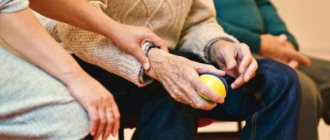Shopping always evokes vivid emotions: pleasant aromas, beautiful displays, designer items, the opportunity to please yourself with new clothes - all this allows you to forget about your problems for a while and immerse yourself in the luxury of the fashion world. But there are people for whom shopping has turned from a harmless hobby or a way to have a good time into a real addiction.
Victoria Orlova, a psychologist specializing in emotional disorders, told us about what causes the need to constantly shop and whether shopaholism can be cured.
What is oniomania
Shopaholism, or, as it is also called, oniomania, is not a separate psychological disease, but rather a type of emotional disorder.
Emotional distress occurs against a background of anxiety or depression, when a person perceives some life circumstances in a negative light. This causes long-term stress. As a result, we may develop various addictions and bad habits: dependence on alcohol, drugs, cigarettes. The same applies to shopaholism.
Interestingly, women are more susceptible to oniomania than men. The stronger sex is more likely to experience addiction to alcohol, nicotine, and computer games. Although there are also shopaholic men.
Risk factors
More often than others, people who experience addiction are:
with low levels of self-esteem;- prone to aggressive behavior;
- easily suggestible;
- poorly adaptable to new conditions;
- unsure of themselves;
- overly emotional;
- self-centered.
It is important to understand that shopaholics are not born. It’s just that for some reason a person begins to devote more and more time to shopping and gradually loses control of himself in them.
How addiction is formed
The need to constantly make purchases arises gradually. For example, while under stress, a person might walk into a store and experience the relief of shopping for the first time. At the same time, his level of serotonin, the hormone of happiness, increased, and the brain, based on the principle of a conditioned reflex, remembered this.
Shopping becomes a kind of ritual, and the brain gets used to receiving relief and pleasant emotions through shopping. The next time a person begins to experience negative emotions, the subconscious will immediately tell you where to go to get a release.
Characteristic manifestations
Some people have no idea that they have shopaholism. The following manifestations will indicate this:
- often comes the realization that pointless purchases have been made;
- the desire to go to the store occurs at a time of severe stress or due to loneliness or boredom;
- there is often no money for necessary things, the budget goes to waste;
- shopping is the only way to escape and unwind;
- while in a store, an insane desire to buy something awakens, and there is a loss of control over oneself;
- staying in the store as long as there is money;
- there is a desire to purchase things that a person does not even know about the possibility of using them;
- lengthy discussion of purchases made;
- going to the store just to spend time there;
- a feeling of anger, disappointment after making a purchase that turned out to be unnecessary or too expensive;
- a feeling of depression when there is no opportunity to visit the store and an increase in mood when such an opportunity arises.
A shopaholic, making another purchase, feels a strong surge of energy, and the hormone of happiness - serotonin - is released. All problems and worries immediately fade into the background.
Internet shopaholism
Shopaholism is spreading due to the availability of online shopping. Open tabs, constant email reminders, beautiful pictures - all this allows you to quickly make purchases.
The big problem is that purchases are made by non-cash payment. When we constantly pay with a card, our expenses double: we don’t feel like we’re giving away money. Therefore, it is best to pay in cash: we feel sorry for parting with it, and we begin to think more rationally.
Content:
- What is the essence of the disease
- Symptoms of shopping addiction
- Reasons for shopping addiction
- Progression of shopaholism in the 21st century
- How to treat shopping addiction
From the outside, shopaholism seems like a fairly harmless phenomenon. What could be wrong with shopping? Even if a person buys an excessive amount of things, this does not harm him in any way. In fact, everything is not quite so simple. Psychiatrists around the world have long considered shopping addiction, or, scientifically, oniomania, a serious mental disorder that is not a whim or a momentary impulse. And it has catastrophic proportions. It is not for nothing that in the 21st century this phenomenon, which has not yet been fully studied, was called the “new plague of the century.” Most often, it is the fair sex who are avid shopaholics, but gradually the disease is spreading among men. And if a person does not want to wake up one day and realize that he has a dozen loans hanging on him, and the whole apartment is littered with unnecessary rubbish, then, like with any addiction, oniomania is important and must be fought. You should not naively think that it can be easily controlled.
What could be the reason
One of the most common reasons is the need for positive emotions. Shopaholism is formed against the background of a feeling of inner emptiness, and with the help of purchases a person tries to fill it.
People often relieve stress when they have problems at work or tension in their relationships. A situation may arise when a woman wants to punish her partner with the help of shopping. Then she goes to the store and spends all the money from the card to which his account is linked, in order to take revenge for his bad attitude.
Another reason is the desire to assert oneself with clothes from luxury brands and expensive accessories, and in this case problems with self-esteem are usually observed.
People who are experiencing financial difficulties often become shopaholics. Against this background, stress develops, which they try to cope with through shopping. They take out loans for purchases, which leads to dire consequences.
The opposite situation is also possible – the desire to feel control over one’s own life. When making expensive purchases, people try to convince themselves that they can afford to buy an expensive, albeit unnecessary item.
Adviсe
When going to the store, take only cash and a strictly limited amount
Let's look at recommendations on how to recover from shopaholism.
- It is necessary to determine what exactly provokes you to make purchases. To do this, you can start a special notebook in which you will need to record after what events you go to the store.
- It will be very difficult to cope on your own. You need to enlist the support of friends and family. Let them control your purchases.
- Find a real alternative to shopping. If visiting a store helps you get rid of boredom, then introduce new entertainment into your life, for example, sign up for a sports section or take up an extreme sport. It is important that every day is busy and that your time is active. This will leave no energy and time left to make purchases.
- The information environment has a great influence on a shopaholic. It is necessary to limit yourself from exposure to advertising.
- Try to evaluate your actions from the outside, realize that you could have done without many purchases. If you want to buy something, analyze what exactly you will do with this item, whether it can be replaced with something less expensive.
- If you decide to go shopping, take very little money with you. This will allow you to protect yourself from unnecessary waste and think more carefully about what exactly to purchase. For example, when going to the grocery store, you need to write a shopping list and approximately calculate how much money it will take, and take that amount. Then you will be forced to buy exclusively in accordance with the list, without the opportunity to buy something unnecessary.
- Try to devote your free time to communicating with friends and your loved one. It is important that all thoughts are occupied with something positive, so that there is no time left for shopping.
- If, when you go shopping, you are trying to transform yourself with new purchases, for example, buying new clothes every two days with the hope that this will increase your self-esteem, then it’s time to understand that you will not succeed this way. It’s better to take care of your skin and body, go to the hairdresser, join the gym. All this will allow you to transform yourself, become better in appearance, physically, and improve your health. At the same time, you can avoid unnecessary spending of money on things you don’t need.
- Credit cards cannot be used. A shopaholic views such a card as an opportunity to waste all the money stored on it. At this moment, the person does not even think about the fact that later he will have to repay the debt to the bank. Therefore, when going shopping, you need to take only cash, at least until you learn to control yourself.
Now you know what the psychology of a shopaholic is. Many people do not pay attention to such dependence; they do not see it as a particular problem. It’s good if you have financial means to make crazy purchases. But you also need to remember about the possible consequences of shopaholism, because this way you can be left without a family, without friends, and even get serious financial problems. If you notice signs of this addiction, do not put off solving the problem until later; if necessary, visit the office of a psychologist or psychotherapist.
How to understand that you have a shopaholism
There are several criteria that will help distinguish an ordinary person who just loves to shop from a shopaholic.
- A healthy person clearly understands why he goes to the store and what he wants to buy.
- He only buys what he really needs.
- He won't be upset because he couldn't get to the store today.
- He can easily leave the store without making a single purchase.
A shopaholic will visit stores aimlessly: he has a need to just be inside. He will buy both necessary and useless things, while he feels an emotional uplift and gets rid of fatigue and tension.
If you see that your loved one spends all his time in shopping centers or on online shopping sites, he accumulates loans and credits, he constantly borrows money and his closets are bursting - this is a reason to sound the alarm and try to help cope with the disorder.
Types of Shopaholics
All people prone to unplanned purchases can be divided into 3 types. [4] This classification helps to build a plan to combat addiction and better understand its root causes. Observe the behavior of your loved one to understand which group of shopaholics he or she belongs to:
Spontaneous
Does not consider himself dependent and does not recognize problems. Although he almost never passes by the “sale” icon on a product and often makes unplanned purchases.
Deliberate
Rarely buys unnecessary things, being practical. But when he sees something he needs in a store, he certainly takes several copies (with different textures, tastes, smells). He loves discounts and bonuses - when he buys mountains of promotional goods, he is sure that this way he saves money.
True
He buys everything at once, without thinking about the consequences. Guided by only one thing - momentary desire.
How to get rid of shopaholism
A person usually realizes that he has become a shopaholic. Some are even proud of it and tell their friends and acquaintances. But at the same time he feels that he cannot do anything in this situation. This is why the myth arose that oniomania cannot be treated - they simply do not try to treat it and live with this problem.
People turn to a psychologist when they develop depression due to shopaholism: due to the fact that too much money is spent on unnecessary things, scandals begin in the family, and debts need to be repaid. And this is already a very advanced stage, which requires the help of a specialist.
At the same time, it cannot be said that the person himself is not able to cope with the problem. Even when working with a psychologist, the patient must first of all cope on his own. Psychotherapy is not a panacea, but with a psychologist, the recovery process will proceed much faster.
First of all, during therapy you need to find the cause of addiction and learn to satisfy your needs in an environmentally friendly manner. Any addiction is formed due to unrecognized needs. Someone may eat away their problems, relieve stress with alcohol and shopping, but in fact want love or recognition. And here it is important to understand what need you have not fulfilled. When you learn to recognize your desires and realize them, your shopping addiction will disappear.
Ways to fight
Group therapy - a method of combating shopaholism
A person must understand that shopaholism is a disease, which means it needs to be fought. Otherwise, you will not get rid of addiction.
- Autotraining. This method of psychotherapy helps people who have realized their problem and are ready to fight it with all their might. A person is given a list of special instructions that must be strictly followed and strictly followed.
- Group classes. Today, more and more people are susceptible to this addiction, so it is not difficult to arrange sessions with the presence of not one, but several people at once. This method allows you to see yourself from the outside, to understand the problem of another person and your own. In addition, being in a group of like-minded people makes the healing process much faster.
- Cognitive behavioral therapy:
- a specialist teaches how to behave in moments of crisis;
- establishes a model of correct behavior;
- explains that all actions must be rational;
- teaches how to react in a given situation;
- discusses possible options for getting rid of addiction.
If shopaholism is not treated, it can lead to serious consequences, financial problems, persistent depression, family destruction, numerous debts, loneliness, and loss of friends.
Social consequences of shopping addiction
Shopaholism is one of the forms of socially acceptable addictions. It seems that the person does not harm anyone. In its mild form, onymomania does not harm the individual itself - it is an accessible and legal way to improve mood and relieve stress. Unlike the same alcoholics and drug addicts, a shopaholic does not degrade, will not commit hooliganism, steal and kill.
Troubles may arise in a person's family life. If a shopaholic accumulates too many loans and spends all his funds on meaningless purchases, then this will not be approved by his loved ones. Onioman often deceives and tries to explain the source of money for purchases. When applied to spouses, such behavior can provoke divorce proceedings.
In situations where debt obligations exceed the shopaholic's income or most of it, depression and anxiety may occur. A person is accustomed to withdrawing them from the process of shopping; he again borrows money, buys unnecessary things and falls into apathy. It turns out to be a vicious circle that is very difficult to break.
Thus, shopaholism, although not the most severe addiction, can bring major troubles to its carrier and provoke more serious mental pathologies.
What is the essence of the disease?
Shopaholism is
a state of manic psychological dependence ,
when a person receives pleasure from the very process of shopping.
It doesn't matter to him what exactly he buys. The price or why he needs this or that thing at all is not important. Repeating stereotypical actions helps a shopaholic feel better, as if shopping is an integral part of his life. And gradually regular purchases become so necessary that they can turn into a sick obsession. Oniomania can be either conscious or unconscious.
The first option is even worse, because when a person understands his dependence on shopping, the pleasure is abruptly replaced by self-flagellation for having failed once again. However, it is unconscious shopaholism that most often leads to debt and unaffordable loans. The disorder is usually accompanied not only by a feeling of euphoria after another purchase, but also by increased anxiety, as well as prolonged depression. Shopaholism also has a common feature with Plyushkin's syndrome (or, in other words, Diogenes' syndrome) - pathological accumulation, but on a much smaller scale. Nevertheless, both of these diseases belong to the same group of impulse control disorders.
Literature:
- Dependent personality and national security: monograph / I. B. Olekhnovich, B. E. Olekhnovich, S. I. Samygin, B. B. Olekhnovich; edited by P. S. Samygina. — Moscow: Rusigns, 2016. — 205 p.
- Addictology (Federal State Educational Standard of Higher Professional Education): an illustrated textbook for students of higher educational institutions of the humanities (all levels of training) / B. R. Mandel. — Moscow: DirectMEDIA, 2014. — 535 p.
- General psychology: textbook / A. I. Kravchenko. - Moscow: Prospekt, 2011. - 430 p.
Need some advice?
OR CALL A DOCTOR
CALL!
+7
Reasons for the formation of addiction
The vast majority of phobias and addictions are formed in childhood, and shopaholism is no exception.
There may be several reasons for the formation
:
Low-income childhood
If a child grew up in a family where there was not enough money, he experienced a shortage of toys and things, then the disease may manifest itself precisely for this reason. With age, subject to good income, a person will try to make up for the deficiency, and may become a shopaholic.
Parental authoritarianism and lack of love
A lack of understanding and respect affects a child even more than a lack of material wealth. The need for warmth in the absence of it is the cause of many addictions. An alcoholic starts drinking, a shopaholic starts buying everything.
Indulgence of all desires
This is the other side of the coin. As a child, everything was allowed to a child; he was bombarded with gifts and toys, often again because of the desire to buy off communication. Growing up, a person, out of habit, fills the emptiness with things.
Shopaholism is an addiction that can develop in adulthood. Life is filled with problems and difficulties, disappointments. Dissatisfaction with one's situation is the cause of shopaholism.
The development of oniomania is also facilitated by advertising, which is a powerful motivator for consumption. Marketing specialists have special knowledge and techniques that force people to buy a product. Advertising is often aggressive in nature, placed in such a way that it is difficult not to notice it - this is all the media, print publications, street signs and billboards.
Advertising is based on instilling in a person the existence of a relationship between the possession of a certain thing and his personal qualities - status, sexuality, attractiveness, etc. Shopaholism makes a person feel important and have a certain amount of material wealth. This is another reason for its occurrence. By shopping, a shopaholic increases self-esteem, releases adrenaline, and becomes familiar with the world of money and beautiful things. Unfortunately, euphoria passes quickly and cannot truly bring self-confidence.
Don't buy into discounts
For those victims of shopaholism, who are already too late to educate, we can recommend the following “treatment.”
- Always pay in cash only. Credit cards create the illusion that you are not spending your own money.
- Make all purchases strictly according to the list, or better yet, take with you a tight-fisted companion who will keep you from unnecessary spending. Remember that discounts are not a reason to buy; buy only what you really need.
- “Forget” money at home more often, let only the necessary minimum be in your wallet.
- Even if you really like the item, don’t buy it right away, ask to put it off until tomorrow. Usually, sobering comes as soon as the little thing disappears from sight.
- Women should not visit stores 10 days before menstruation. British scientists have concluded that the reason for women's reckless shopping is a hormonal imbalance caused by the approach of menstruation.
Read on social networks!










